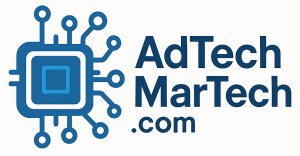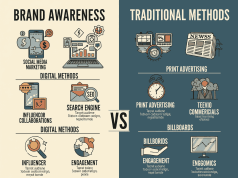In 2025, the landscape of advertising is undergoing a significant transformation, largely driven by advancements in technology, shifting consumer behavior, and evolving data privacy regulations. Programmatic advertising, which automates the buying and selling of online ad space, is at the forefront of this evolution. This article explores the emerging trends that are shaping the future of programmatic advertising and how businesses can adapt to stay competitive.
1. Increased Use of Artificial Intelligence and Machine Learning
AI and machine learning are no longer mere buzzwords; they have become essential tools in programmatic advertising. These technologies are improving ad targeting and personalization, enabling advertisers to deliver more relevant content to their audiences. Algorithms can analyze vast datasets in real time, predicting consumer behavior and optimizing ad placements.
In 2025, we can expect to see more sophisticated AI models that not only analyze past behavior but also anticipate future actions. Brands that leverage AI will be able to craft personalized experiences that resonate more deeply with consumers, driving higher engagement and conversion rates.
2. Privacy-First Marketing
With increasing regulations around data privacy, such as GDPR and CCPA, programmatic advertising is shifting toward a privacy-first approach. Consumers are becoming more aware of how their data is used and are demanding transparency from brands. In response, advertisers are developing strategies that emphasize first-party data collection while minimizing reliance on third-party cookies.
The removal of third-party cookies, which was accelerated by Google’s announcement to phase them out by 2025, pushes brands to invest in direct relationships with consumers. As a result, we’ll see a surge in consent-based marketing strategies, where value exchange is central to data collection.
3. Rise of Connected TV (CTV) Advertising
The growth of streaming services has contributed to a pivotal shift in how consumers engage with content, leading to a surge in connected TV (CTV) advertising. Programmatic CTV offers advertisers a unique opportunity to reach audiences in a highly targeted manner, combining traditional TV’s broad reach with the precision of digital advertising.
In 2025, CTV advertising is expected to expand, moving beyond just ads on streaming platforms to encompass more integrated experiences across devices. Advertisers are likely to adopt data-driven strategies to enhance viewer engagement, offering interactive and personalized ad experiences.
4. Emphasis on Sustainability
Eco-conscious consumers are driving brands to adopt sustainable practices, and this extends to advertising. Programmatic advertising in 2025 will increasingly focus on sustainability metrics, with brands looking for ways to reduce their carbon footprint. Digital ads often consume less energy than traditional media, but advertisers are now seeking partnerships and platforms that prioritize eco-friendly practices.
This trend is not just about appealing to environmental values; it’s about aligning with a growing consumer expectation for socially responsible business practices. Brands that successfully communicate their commitment to sustainability will likely gain a competitive edge.
5. Hyper-Personalization Through Data Segmentation
In a world where consumers are inundated with content, hyper-personalization is becoming a key differentiator. Advanced data segmentation allows advertisers to provide tailored experiences that cater to specific audience segments. This trend will see an increase in the use of dynamic creative optimization (DCO), where ad content is automatically adjusted based on the viewer’s preferences and behavior.
In 2025, expect to see more brands leveraging data analytics to create granular customer segments, leading to campaigns that feel more relevant and personal, ultimately driving higher brand loyalty.
6. The Integration of Augmented Reality (AR) and Virtual Reality (VR)
As AR and VR technologies continue to evolve, their integration into programmatic advertising is becoming more feasible. Advertisers are exploring immersive experiences that allow consumers to interact with products in a virtual space.
In 2025, we can anticipate growth in the use of AR/VR in campaigns, providing consumers with engaging ways to visualize products before purchase. This interactive approach can lead to higher engagement rates and more informed purchasing decisions.
Conclusion
The future of programmatic advertising in 2025 is poised for transformation, influenced by technology, privacy concerns, consumer expectations, and evolving platforms. Brands that adapt to these trends will not only enhance their advertising effectiveness but also foster deeper connections with their audiences. As programmatic advertising evolves, staying informed and agile will be critical for success in this dynamic landscape. Embracing innovation while prioritizing transparency and sustainability will likely define the most successful advertising strategies in the years to come.









